#but I feel like I’m frankensteining together my own ideal version and a lot of the stuff I like is from the older productions
Explore tagged Tumblr posts
Note
✍️🎁🧠
The answer to 🎁 is here!
✍️ If you had total creative control over a production of Cats, what would you change and why?
I wrote more than I intended for this one lol let’s go
Gillian Lynne’s choreography, early Broadway/US based designs, bring back Etcetera, Misto is mute but has his “mature” personality, give Jenny and M&R their second verses back and put those “Jellicle sharps and Jellicle flats” lines back in Jellicle Songs, someone has a tap-dance-off with Jenny again, give the Pekes and Pollicles back to Munk and change the racist lyrics, no Macavity interlude, Victoria is the one who initiates contact during the Lift, Misto and Cass also have that little moment of theirs during the Lift, tbh idk exactly what I would do for Gus but he needs a Something that isn’t Pekes or the original Growltiger, bring back the Shadow Dance, Rumpleteazer is mentioned during Macavity, I know I said mute Misto before but I cannot stress enough how much Misto doesn’t sing his own song, after he bring’s Old Deut back he does that slow walk and bow thing with Cassandra that I’ve only seen in the ‘98 film (if you know of any other production that did that plz lmk I’m begging), when Griz collapses during Memory everyone flinches as if they’e about to run up and help help her but stop themselves aaaaand last but not least is Griz takes the staircase to the Heaviside layer
The only change I’d make that isn’t a “some production did/does this” is Bomba and Tugger singing Mistoffelees’s song as a duet
Why? Idk man I just cherry picked the little details I like :]
🧠 Share a headcanon/theory about the show that you like!
Macavity is actually Mistoffelees’s dad but no one knows that, not even Mac or Misto themselves
#tysm for the ask!#I’d have to do an separate list if I got into casting preferences#same goes for little background interactions moments#I know it kinda seems like I’m just picking the ‘it was better befur hurdihurr’ options#but I feel like I’m frankensteining together my own ideal version and a lot of the stuff I like is from the older productions#I’m having Opinions#cats the musical#jellicle answers
6 notes
·
View notes
Text
Thoughts and Feelings about“Change Your Mind”
I really wish I could rewatch this motherfucker somewhere but I have to sleep and go to work
Well on the one hand the main story lines are pretty much done for, on the other, the fallout alone could fill another season, and I’m actually glad that they’re not relegating that to the epilogue but actually going to show it
I assume season 5 will be Steven working with the Diamonds to improve homeworld, explaining things to Jasper, integrating the former corrupted gems on earth, finding out the deal with pink pearl, further developing Steven’s new fusions etc.
Other open questions involve gem origins and peridot’s renewable energy project, but I suppose that will come up as Steven tries to make the Empire less... imperialistic.
I understand why they wanted to air this in one piece, you couldn’t leave the younger viewers hanging with some of these creepytastic scenes and no resolution
There’s various concepts I feel reminded of.
There’s this idea of “tzimtsum” in kaballalistic thought, about how God created the world - In order to create a being apart from himself, he “hid” some aspects of the being, the ones that would seem - So every part of creation reflects one aspect of god, but none shows the complete pictures of it, and because everything has some aspects of god but not others, it is unique - so all humans are made in gods image, but still be different from each other.
Maybe Pink Diamond would be something like Lucifer in this analogy, part of the creation but as far from the god as you can get while still existing, and somehow their antithesis (stretching the analogy here, of course Judaism has no counterpart to Lucifer let alone the positive-ish early modernity interpretions of him - but of course, White Diamond isn’t exactly a benevolent God either. )
First of course Star Trek, like the ep where Captain Kirk is split into what at first seems like his good and evil half but is more like his animal instincts and higher reasoning, or in Voyager, when B’Elana Torres is split into her human and Klingon halves.
I guess Garnet wasn’t completely wrong in his being something in-between fusion and human reproduction, his gem half could be considered A Pink Diamond, but not the same one who created him - He must be fricking powerful to shrug off WD’s beams like that, like how Stevonnie still has “boosted” versions of Steven’s abilities despite Connie being human, Steven’s probably like Pink Diamond, but ‘boosted’.
Steven’s victory certainly showcases how it comes from both sides of his heritage. It involves making WD laugh/embarassed like what Pink used to do, but unlike her, he has the communication skills from Greg - I don’t think Pink ever talked to Blue in that way, she didn’t seem aware of what the other Diamonds were thinking at all, any more than she really understood Pearl’s lingering knot of complexes. It’s just not a skill she could have picked up before Greg - when? From whom?
His responsibility is all uniquely him and due to his upbringing with the CG’s and wanting to help him more, tho, both his parents where free spirit hippy bohemians, but it was Steven who decided “Nope, I WANT to fix it, because I can”, not because he owes it to anybody, even when no one could fault him for running.
Also, Frankenstein (the Novel not the film) - The original Victor was a sympathetic, even admirable character, but somehow he just couldn’t bring himself to have empathy with the monster, though Adam was in many ways alike to him and initially didn’t wish to be his enemy. Because while the gems relate to White Diamond as their goddess and the other Diamonds see her as their mother, she seems to regard them as extensions of herself. Maybe she would, as their creator. Gods are expected to smile benevolently upon their followers and solve their problems, Mothers, while they are flawed humans, are supposed to love their kids as they are and realize that they become their own persons, but artists frequently tear up their own work if they’re dissatisfied with it, because it’s supposed to be a reflection of their existence, so they might hate it for not reflecting them well enough -
i often regret tearing up half my teenage fanfics, but I’m able to view them different now that I’m - Back then, I felt like they reflectzed badly onto me - but if had kids and treated them like my fanfics or crumpled drawings, well, that would scar them for life.
You could certainly see this as a metaphor for narcissism, particularly in the way WD judged everything by how much it was like her, to the point that she would ‘overwrite`’ ppl’s personalities with her ideas of how it ought to be, while lacking a solid identity of her own apart from being “perfect/the best” by default, but that only goes so far because the gems literally are her creations who take their characteristics from various aspects of her being.
She’d have a completely different conceptual framework to anyone else, though she’s certainly not “above it” in any way.
I don’t think she was completely unaffected by Pink’s dissapearence either, if you want to complete the Stages of Grief analogy she would be Denial or Bargaining. Most likely, she was growing increasingly frustrated with her ability to make her empire “perfect” like she ought to and that’s why she started keeping to herself more and assuming that Pink couldn’t be dead.
She seemed like the knowing one when she was as much in denial as anyone else - you can tell they had a complicated relationship because of how White saw herself in her, that might be why she indulged and preferred her, but then again she didn’t always like what she saw and felt that Pink represented parts of her that she didn’t want to see.
It’s not without reason that Steven tells her to “get out of her own head” and try to see the world for what it is rather than her preconceived notions of what it is or means. You could perhaps relate that to
When she realizes that she’s actually dead - that’s when she has her breakdown.
You could even draw a parallel to “Romeo And Juliet”, where the older generation only realizes how much its ways were fucked up when it gets their beloved children killed for just trying to live happy lives.
Cal Gustav Jung would certainly remind us that what irritates us about others are often things that irritate us about ourselves, that we may be liable to “see the world as we are” and never is that more apparent than when we view everything through some skewed belief system, or when we hate - people hate people who blur boundaries because they don’t want to confront the ambiguity within themselves, or act as “superior” and merciless because they’ve rejected their own mortal fragile humanity.
Another observation is that when you set up anything as the “default” you create pressure not to deviate from the norm and prevent its members from experiencing their individuality. (see societal pressure on heterosexual men, or Euro-Americans saying they ‘have no culture to celebrate’ - maybe instead of becoming a devouring plague upon your fellow men, you could actually appreciate European culture? Like, read some books, eat some cheese, learn a language, listen to some classical music, vote for worker protection laws?)
It speaks for PD that she even tried to save other aliens at some point. steven stepped completely out of her shadow the moment he was able to feel sorry for her, like “Geez, she had to live like that? No wonder she turned out the way she did!” he pretty much calls the other Diamonds out at some point, like he gets a secure sense of the differences between them when he realizes how much better off he’s been in his own life. Like, UGH.
For my part, I don’t believe the “best of the worst” thing was true, and more of an “evil cannot comprehend good” moment from White, if not outright projection. (after all, White seems to view all other Gems as imperfect copies of herself) If anything, Pink seemed upset that she got stuck being the leader even as “Rose Quartz” (see the Beach scene in “Greg the babysitter”) - but of course Steven, not being Pink, wouldn’t know whether or not White is right.
Other Thoughts:
In the earlier scenes you could see a lot of parallels to less than ideal family situations, and how people might end up acting as proxies of the problematic person, almost sprouting their words, in the name of keeping the peace, and how people in such an environment may have no idea of how it’s not normal
You CAN talk down such a person (I know of multiple people who made a bona fide job out of talking sense into literal nazis and clansmen, person by person - their tactic was generally to find whatever problem their rage came from), but there’s a difference between “flawed” and “awful” and I do think it came through that White is a piece of work quite unlike, say, Connie’s mother, and that Steven’s dealing with her because he wants to for the good of society, because he’s the bigger person and secure in himself, not because he owes it to her or anything
It seems like they went for “awesome” rather than “beautiful” with Steven’s fusions. The designs are kinda gaudy, but even so, once you getpast the gaudy design, it’s kind of touching how Steven’s and Garnet’s fusion is essentially a motivational speaker who sprouts encouraging advice nonstop. Garnet was always Steven’s Mentor and as well as the main person (besides greg) to teach him morals, as well as generally encouraging & supportive, but Steven of course encourages and supports her too, and both like doing that for others
I love Peridot’s short shorts and that she and Bismuth repaired the ships/ went a-tinkering together. It took me a bit to notice that it’s supposed to be shorts and not just her old outfit with starts instead tho
Voice of Reason!Connieis a gift that keeps on giving
5 notes
·
View notes
Photo
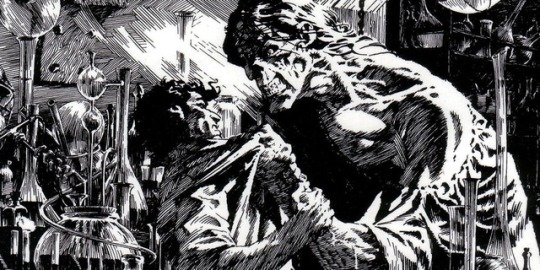
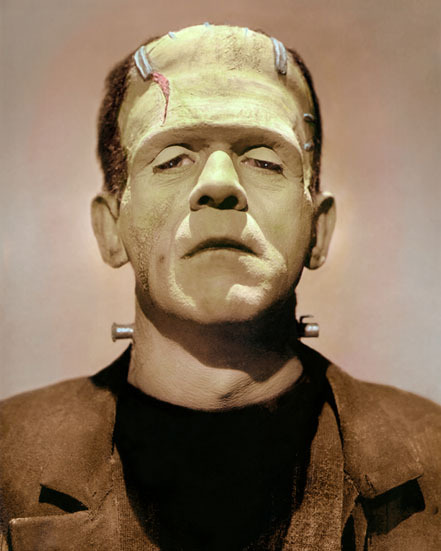

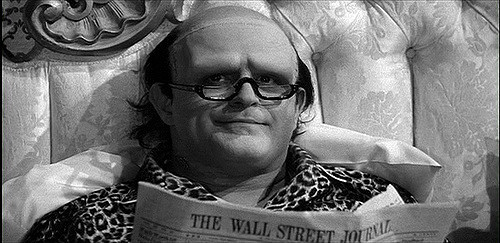

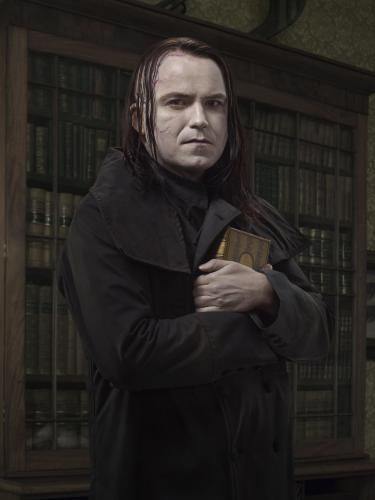


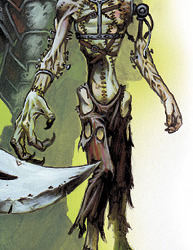
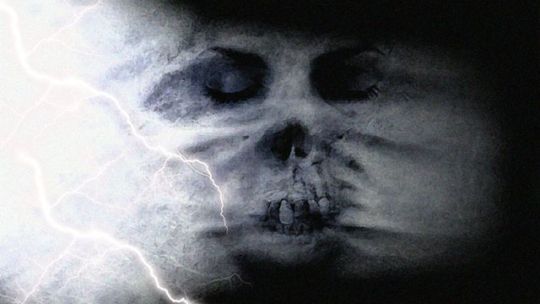
30 Day Monster Challenge 2 - Day #2: Favorite Frankenstein
1.) Mary Shelley/Bernie Wrightson
Put simply, there’s no beating the classic. Mary Shelley’s original monster is a landmark in literature, the coalescence of an idea about monstrosity and humanity that has been developing since the dawn of civilization. Alright, so that might be a little grandiose, but the point stands; the original Frankenstein’s monster is still the best. Like Dracula, every new generation brings a new interpretation, and makes new connections to him. The monster has, through his influence on culture, succeeded in becoming the father of his own race. He is a true monster of God, a divine omen, an abstract entity that conveys the importance of man’s reaching scientific knowledge. He makes us question our limits, our humanity, and how much we as a species are meant to stretch and bend away from the natural order. And to this day, nobody has managed to quite capture that ideal perfectly.
But the late great Bernie Wrightson came pretty close. Known mostly as a comics artist, Wrightson’s version of Frankenstein is the one that comes to mind for me whenever I envision the monster. He is simultaneously majestic, horrifying, and pitiful. Built like an Olympian god with a face like a corpse. Wrightson’s work on his expressions can convey anger, sadness, and the creature’s own weariness for existence. Wrightson’s monster, to me at least, comes the closest to invoking Shelley’s description of Frankenstein’s attempt at an ubermensch, and his subsequent failure.
2.) Boris Karloff
There’s a lot to be said against Karloff’s Frankenstein. It created a pop cultural image that is ultimately at odds with Shelley’s work. The monster’s eloquent suffering is replaced with a series of moans and grunts, and his arc is ultimately threadbare. And yet, Karloff’s Frankenstein brings something absolutely essential to the Frankenstein mythos; innocence. The creature is a victim of its own creation, too powerful and too strange for this world. The damage it causes is the byproduct of its father’s meddling in things man was not meant to know. That’s a perspective we didn’t get a lot of in Shelley’s original novel, and for all that the Universal movie is different from the novel, it meshes with the novel’s morality by reminding the audience of an important message; the value of humanity. Karloff’s monster appeals to our humanity on the most basic level, that of an innocent suffering. In that, I think even Mary Shelley would be proud.
3.) Shuler Hensley
Aaaaand now we’re back to Van Helsing. Okay, legitimately? I think the Frankenstein’s monster is the best part of Van Helsing. I am dead serious. Like Castlevania’s Dracula, the monster here is an amalgam of all the different parts of Frankenstein pop culture. There’s alchemy, mad science, and body horror, but there’s also a search for humanity and a desire to find meaning in life. Also, like everything in this movie, overacting. Just some grade-A overacting. Hensley screams his lungs out shouting Byronic prose, which I always took to be a kind of fun dig at the original monster’s own flair for the overdramatic.
4.) Peter Boyle
Boyle doesn’t bring a lot to the table as the creature in Young Frankenstein. The movie is a loving parody, and it clearly derives mostly from the Universal Studios movie. And yet, there are some subtle hints of brilliance in this portrayal of the creature and Frankenstein. The Universal movie was a source, yes, but Mel Brooks also drew from the novel for his own spin. At the end of the movie, Gene Wilder’s Frankenstein departs from Shelley’s (who is also the character’s grandfather) by taking responsibility and trying to help his creation. And in turn, the creature forgives and protects Frankenstein. I know it’s all just for good fun, but when you start viewing it through the classic metaphors applied to the novel, it creates a more optimistic picture about human progress. (Plus, I’d be remiss if I didn’t include one of my favorite movies on this list.)
5.) Christopher Lee
Christopher Lee’s Frankenstein is actually the version that turned me on to the character. When I was a kid, Boris Karloff’s Frankenstein did nothing for me; he was too sad, too sympathetic to be a monster. Frankenstein’s monster was supposed to be scary to me; stitched out of corpses, with greasy black hair and dead eyes, angry at all the world. (Also dressed in a stylish black suit.) Lee’s monster delivered that to me. The moment I first saw him, I knew that this was how Frankenstein’s monster was supposed to look. Now that I’m older, I can appreciate Boris Karloff’s performance more, but I’ll still always have a fondness for my first favorite Frankenstein.
6.) Rory Kinnear
The youngest monster on this list, Rory Kinnear played Frankenstein’s monster, referred to variously as Adam or Caliban, in Showtime’s Penny Dreadful. Think a cheaper, tawdrier League of Extraordianry Gentlemen. Appearance-wise, Kinnear’s Frankenstein is... it’s- it’s not great. This show had the special effects budget of some pocket lint and the grace of God. But the character is what stood out here. Kinnear’s creature, more than any other, struggles to find his identity, to find a means to turn his monstrosity towards good. His constant failure as people use him and reject him embitters him even more against his creator, but gives him a common bond to other characters. In the show’s last season, Kinnear’s Frankenstein reunites with the family of the man who’s body was used to create him, stepping in apparently returned from the dead. And that and what happens afterward with the character are, I think, worthy additions to the Frankenstein mythos.
7.) Junji Ito’s Frankenstein
Leave it to Junji Ito to create the first truly repulsive Frankenstein. Lee’s came close, but Ito’s portrayal of the monster is nothing short of revolting. In the novel, it’s never made clear why exactly people are repulsed by the creature’s appearance; it might even have been all in the character’s perception. But Ito’s Frankenstein is simply hideous; it’s the first Frankenstein I can think of where you can imagine what he smells like, and it’s like rotting meat. The monster is imposing, too; Ito, like Wrightson, didn’t skimp on making his creature gigantic in proportion. It’s hard to feel sympathy for this creature, and it almost seems to take pleasure in the evil it commits against its creator. It’s easily the nastiest version of the monster you’ll ever meet.
8.) The King of Toyland
Like Van Helsing, The League of Extraordinary Gentlemen is just something I’m going to keep coming back to during this challenge. League’s Frankenstein is mentioned only in passing, making an actual appearance only as a background cameo, but what little is given might just be the most heartwarming version of the character I’ve read. After the canon events of the novel, Frankenstein’s creature wanders the Arctic Circle, despondent and immortal, unable to kill himself. In his wandering, the creature finds a land populated entirely by sentient dolls and toys, hidden in the North Pole behind a magical field. This is Toyland, from the Noddy series of English children’s novels.
The residents of Toyland are ruled over by Olympia, the automaton girl from the opera The Tales of Hoffman. The toys, instead of rejecting the creature, ask him to stay, claiming they need his strength to protect the land. The toys don’t see the creature as unnatural; to them, he is simply another misfit toy, an oversized doll. In time, the creature and Olympia fall in love and marry, and they rule as the king and queen of Toyland. The creature, at last, has found a place and a people he can call his own, somewhere where he is accepted, a purpose for his strength. And somehow, this was all written by Alan “Old Man Yelling at a Cloud” Moore, without a shred of irony or cynicism. And if you don’t think that’s the most sentimental shit in all of Frankenstein lore, then I don’t know what to tell you.
9.) The Flesh Golem
Before even Christopher Lee, the first version of Frankenstein’s monster that I really loved was the one in the 3rd Edition Dungeons and Dragons Monster Manual. Well, okay, it’s not actually Frankenstein’s monster; it’s just a ‘flesh golem’. But energized by electricity, afraid of fire, made of dead men cobbled together? Come on. My older cousin used to tell me that her idea for Frankenstein’s monster was that Frankenstein ran out of human parts, and had to resort to animal material to finish the creature. Frankenstein might have the nose of a pig, or the eyes of a horse; anything to finish the work. That idea never left me, and I thought of it every time I stared at the flesh golem, taking in the metal frame and oversized claw. I remember the first time I actually read the novel, I kept drifting back to that lanky, stitched-up construct with its monster parts and lop-sided face.
10.) The Prometheans
Another tabletop rpg rendition of Frankenstein’s monster, this was a whole game built around them. Promethean: The Created was the fourth of the New World of Darkness line or Chronicles of Darkness or whatever we call it these days. In it, players took on the role of artificially created beings, filled with supernatural energy, whose very presence twisted and corrupted the world around them. Normal humans can’t stand to look at them as a supernatural field makes them immediate targets of hatred, and they are hunted by their own twisted, monstrous bretheren who want to consume their divine power. And yet, for all that, it was a fundamentally optimistic game. Promethean marked a trend in the World of Darkness line that turned away from doom and gloom towards seeking salvation. The ultimate quest of the Prometheans is to gain their humanity, and their journey is about undertaking a pilgrimage to their ultimate realization. Promethean is about personal horror, and defining one’s own humanity.
#30 Day Monster Challenge 2#30 Day Monster Challenge#Frankenstein#Mary Shelley#Horror#long post#young frankenstein#junji ito#promethean the created#penny dreadful
29 notes
·
View notes
Text
Zack Snyder's Justice League, 2021 - ★★★
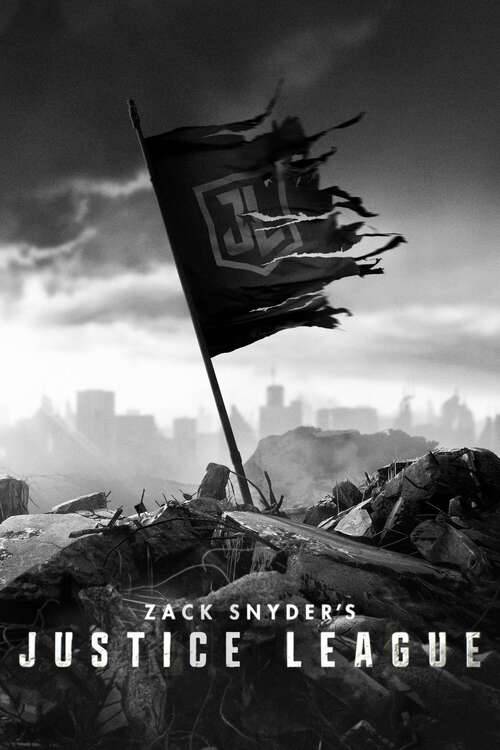
Daddy Issues: The Movie.
I'm conflicted about the existence of this film; as an exercise in studio interference it's fascinating, as a parable of what can happen when fans rise up, it's a cautionary tale, and as the shape of things to come, it's questionable. I don't think fans should get to decide anything; hiring the correct filmmakers and giving them creative freedom would be the ideal option because you give the people what they need and never what they want. What they want, as evidenced by everything, almost always sucks and they're left unhappy anyway. And this film might be the exception that proves the rule.
And although Zack Snyder's Justice League was a film worth creating from the butchered remains of the original incarnation, it shouldn't have come at the behest of how much vitriol was cast out there in the process, and it shouldn't be a signal that a rabid and butthurt community of internet trolls that believe they deserve whatever they want, exactly as they want it, should ever influence the film industry ever again.
This should instead be a reminder to Studios that they know about as much as Marketing departments or gamblers or stock market traders: they're just pissing in the wind and when it lands in the toilet they claim it's by some kind of design of their own making and brilliance. Hire somebody good and get the fuck out of their way. At least if it's shit (like this film basically is) it is the fault of one person's vision and I'd rather have a noble and coherent failure than a luke-warm, mediocre carcass of a Frankenstein's monster made up of opinionated Suits, en-vogue and focus group-driven decisions acting only as a commercial for toys like 2017's Justice League was.
So the film itself? It's incredibly enjoyable, I had an absolute blast with my family round watching it like an old-school movie night. Is it a better movie? Yes, 100% in practically every way. Is it a good movie? Nope! But it's one person's coherent vision, I just hate that vision and I don't think he pulls it off.
Snyder constantly undercuts his own good ideas by his own execution, stumbling into his own sandcastles; some sequences have some really fantastic starts and then they're shot and edited in a way that makes me crawl inside out with cringe; singing a Nordic-style Aquaman song: great, having someone really close up sniff his jumper and sing right at us: horrific. And there's legion of these terrible choices by Snyder, usually things that don't make logical sense but mean he can do something because it's simply cool. (Martha Manhunter anyone?) But we already know by now that cool on its own isn't enough. Snyder doesn't. Having Batman say "fuck" isn't cool, it's dumb. Having Superman say a cocky (rubbish) one-liner when he saves someone from Steppenwolf is out of character, it's dumb. More than once I was able to predict what a character was going to say before they even said it. Come on, this isn't Trey Parker and Matt Stone's Team Justice League.
On the undeniable positives are the colour grading, score, the reels of added and altered material and more. Most of the added scenes are way, way better, more coherent and the film looks great actually. It does look Olympian and classic as I imagine he wanted it to, like the cave murals Diana sees. The extra character and coherence allow the jokes and interactions to breathe; Wayne is a little funnier, Diana, sadder, Cyborg, actually here for a change with something to do, and seemingly powerful, and Flash (thank god) not annoying. Even Irons' Alfred gets basically the best material and comes out of it my favourite character. Truly the Alfred of the group.
What doesn't work with this is that there's so much slow-mo that it becomes laugh-out-loud funny and goofy rather than impressive and dynamic, and in a 4-hour long film, you'd better be damn sure that amount of slow-mo is necessary, even in the slow-mo shots you can palpably feel they drag on for a few seconds too long each time.
And my god let's talk about the soundtrack. So Snyder has now consistently proven himself to be awkwardly tone-deaf to good music in all of his films. He can't pick an appropriate track, he can't pick an ironic track. Every time he does one of his patented slow-mo, nothing sequences over a full track of music (it feels like) it's so awkward I almost got up and left my own fucking house. There's like five of these.
But the action here (apart from being blasted in the eyeballs by insane amounts of bright lights) was all really genuinely good here, he's got it down, the dynamism didn't feel stodgy and CGI-ified, wasn't just a big invulnerable guy bashing someone aside for ten minutes, they fought as a team, it looked and felt fun, and at times, really tense and involving. It's a huge step up from whatever they did for the theatrical. The Amazonian stuff was motivated, gripping and grand. Anything with Steppenwolf felt imposing and had heft and tactics to it. Bravo.
Speaking of Steppenwolf, his Middle Managers and Head Office in the form of marble liquid Henchman, Darkseid and CGI Anette Benning(??!!) felt like strange meaningless additions, as did the anti-life equation shit (this is what Marvel doesn't do, they're expert-level at exposition for newcomers and easter eggs for fans combined). Darkseid looked like a troll, neither imposing nor unique or cool, and I'm not talking an ordinary troll, I mean one of those shit ones that gets turned to stone in the sun, not even a proper fighting troll. He looked like the first mini-boss encounter in a Lord of the Rings videogame. But...
But Steppenwolf looked awesome and I actually liked him here and his Simp for Daddy schtick. I laughed at him a lot, but like Synder I had a lot of endearment for him and his cute, sad, hopeful eyes. Daddy please love me! I promise I'll do better! I can't explain why he worked this time but he did. Maybe it's because the story felt interesting (dumb but at least it all made sense internally) and it felt grand in scale and scope and had stakes and whole added motivations for everybody.
Speaking of what else worked, yes I enjoyed the 4:3 aspect ratio, I thought it would just be Zack Snyder wanking himself off again (see: Justice League: Dark or whatever they'll call his upcoming Black and White version) but I kind of loved it, it was almost euphoric and actually did replicate some of what going to the IMAX felt like. I liked feeling like these colossi of comic books were towering above like statues.
What didn't work was that the chapter headings had nothing to do with the chapters at all or anything that happened in them which felt strange. Also, characters over-egg their lines as if we're dumb and keep stating the obvious in such a first draft way that I felt myself getting stupider.
One of my main gripes is if you keep trying to one-up yourself, these character do not feel understandably epic and powerful. They're all kind of idiotic and silly and po-faced and posture so much and say snappy one-liners and prance around like Chads. Snyder thinking he’s some kind of subversive genius and all that is sweet, but most of time I'm laughing at his cloying fan-service. He's the kid that keeps telling you how great he is and you don't mind because you can see he's got no friends and he's been bullied. Snyder isn't as aggressively dumb and bullish like Michael Bay is, for example, and Snyder's movies are largely coherent. But he's trying too hard and I just don't like his vision. As little elseworld graphic novels this kind of shit between Batman and Joker works, or in films like Joker you can do some out-there things, rather than in this, a mainline, flagship series.
Zack Synder is a little like a first-time Dungeons and Dragons DM trying to impress his table with all his edgelord grittiness and "vision"; He is a child that has two figurines and is smashing them together and yelling "Look! Look what I'm doing! Superman is beating everyone up! LOOK!" Zack Snyder's Justice League is simply, more than anything, endearing. That's the best way I can describe it.
Endearing.
And this film being endearing means I can't hate it, even though I think it's rubbish; because if a child builds a fortress of Lego, it's not exactly the Taj Mahal, but it is impressive. But when he knocks it all down I'm right there yelling for him to pick up all the destroyed pieces now because it can't always be playtime. A film can't just be spectacle and chaos and whatever-the-fuck-you-want. It has to be about something.
Justice League is about nothing. The Dark Knight was about Chaos in a system used to Order even if there was chaos inherent in the order. And it asked you to look at that chaos vs unbridled chaos. With both Dent and Joker as two sides of the same coin; chaos and order, and it put that paradox or that choice to the people of Gotham. It was about surveillance states, money, and sacrifice. And so much more. The Dark Knight subsequently became timely and timeless.
Justice League is about nothing and it will fade into nothing because of it. The euphoria will pass. It's OK it exists. It OK that we move past it now.
source https://letterboxd.com/offworldcolony/film/zack-snyders-justice-league/
0 notes
Text
The Complicated Ethics of Photoshop in 2018
http://fashion-trendin.com/the-complicated-ethics-of-photoshop-in-2018/
The Complicated Ethics of Photoshop in 2018
Not long ago, I sat at a dinner table surrounded by influencers of note and observed as they edited a group photo in the FaceTune app. With practiced fingers, they quickly erased the wrinkles in a dress, smoothed out a few tummies and erased a blemish. If you held the original photo and the edited photo next to each other, you might not even be able to spot the differences, not unless you were searching for them. The tweaks were subtle — artful even. Everything just looked slightly more perfect.
A photo editing application that makes photoshop-style retouching easy for non-professionals, FaceTune has been downloaded more than 50 million times since it first launched in 2013. Similarly to how Instagram put photography in the hands of the masses, FaceTune has effectively done so for retouching. Anyone from Kim Kardashian to the barista who makes your coffee can download the app for free (though it costs an additional $5.99 per month for access to all the features). I downloaded it myself as research for this story and tested it out on a recent selfie. Using a sliding tool, I plumped my lips, slimmed my jawline, blurred my pores and narrowed my nose in mere seconds. To say that FaceTune is user-friendly is an understatement. It’s easier than ordering dinner on Seamless.
In a world where the ability to alter your appearance is both accessible and effortless, I’ve started to wonder how the “ethics” of Photoshop are evolving. On principle, I support every individual’s right to do whatever they want to their own bodies cosmetically, but using Photoshop for the purpose of digitally squeezing oneself into the narrow confines of a societal beauty ideal feels like a uniquely slippery slope.
Curious to learn more about the professional side of Photoshop use, I reached out to photographer Aaron Richter. “I use Photoshop on pretty much every image, with very few exceptions,” he told me. “It’s a step in my process, so I’ll have images looking fairly close to how I want them to look, and Photoshop helps me massage them into the exact right colors and balance I’m looking for. I try not to over-retouch my work, but my aesthetic is fairly clean. I’ll get rid of blemishes, but skin should look like skin. Bodies should look like bodies. I use Photoshop a lot to clean up environments, sometimes tidy up some clothes that might be sitting odd.”
Notably, The New York Times has a strict no-photoshop policy. “You can’t alter them in any way,” Aaron told me. “If I’m shooting a celebrity, they’ll often say something like, ‘Oh well you can just fix that in Photoshop.’ But for The Times, I can’t, so I need to pay closer attention to every little bit of the photo. […] For example, like say you’re shooting a woman and she’s wearing a pair of pants that poof unflatteringly at the crotch. For most clients you’ll just shoot through it because it’s easier just to liquify the offending area in post rather than breakup the flow of the photoshoot to wrangle the pant-poof. For The Times, you actually have to fix it or you’re stuck with it.”
When I asked if he’s noticed the ethics of retouching change over the course of his career, he said, “Every now and then I’ll get a request for a Frankenstein where you take one part of the body from one image and combine it with another image, but honestly that request is happening less and less lately. Where before it was kind of expected that we’d be able to do something like that in post, now I think clients recognize the stigma behind creating this kind of fake image, even if all you’re doing is something like changing a raised armed to a lowered arm.”
Ironic though it may seem, it makes sense that outlets are becoming more conservative with Photoshop as the general public becomes savvier with it. Beyond the internet outrage machine’s fascination with retouching scandals (remember when Jezebel controversially offered $10,000 for the unretouched photos of Lena Dunham in Vogue?), people are also simply getting better at detecting traces of Photoshop the more they engage with this kind of technology themselves. But there’s a big difference between, say, color correcting a photo and “Frankenstein” body part swaps — both in terms of a layperson’s ability to detect the changes that have taken place and in terms of how “acceptable” we might deem the changes to be.
“Almost every image you view has had some post-production work done on it, be it just color and grain, or removing tape from the floor and scuffs, dust, fingerprints or clothing clips, or much more,” professional retoucher Kate Coats told me. “There’s a whole world of retouching that happens aside from any alterations to the model. I see retouching as part of the process of taking a photograph, just as with lighting and hair and makeup. They all go together to make the final image.”
Those eyelashes in that mascara ad may have been drawn in, the hair in that shampoo commercial is probably a compilation of five different shots and that reality star’s body probably doesn’t look that perfect in actual reality.
She told me she will happily remove so-called “imperfections” that wouldn’t necessarily be there if a photo had been taken another day — like a visible pimple — but acknowledges that even with personal ground rules it’s easy to go overboard. “Customers generally prefer perfection,” she said. “This drives clients to push for flaws to be removed and so on and so forth. It’s a nasty cycle. We need to rewire our [thinking].”
The solution, from her standpoint, is more transparency: “Our tweens and teens need to be informed that the images they are viewing are edited, that they are not always attainable goals,” she said. “Those eyelashes in that mascara ad may have been drawn in, the hair in that shampoo commercial is probably a compilation of five different shots and that reality star’s body probably doesn’t look that perfect in actual reality.”
I spoke with jewelry designer Pamela Love about the topic, and she echoed Kate’s concerns about how easy it is to take things too far when something as nebulous as perfection is the goal. “I went through a period where I started posting fewer impromptu photos on my Instagram,” she told me. “Instead of just snapping a fun photo and putting it up, I would retouch it and play with the light and the sharpness. That version of perfection had started to look ‘normal’ to me because there are so many Instagram accounts out there that are essentially Pinterest boards — they all just look so perfect and you’re like, is that how mine’s supposed to be?”
Their comments underscored my initial suspicion that the ethics of Photoshop are growing increasingly murky as its usage grows increasingly ubiquitous. The more achievable on-screen “perfection” becomes, the more normal it will start to look, which in turn means anything less than perfection will start to appear abnormal. (A precedent for the normalization of beauty standards is observable in the politics of wearing makeup: People are so used to women wearing makeup that when they choose to forgo it, women often report people asking if they’re tired, or even sick.) This reality felt particularly acute most recently when I saw photos from Outdoor Voices’ Exercise Dress campaign and didn’t realize the model Lil Miquela was actually a CGI robot — literally computer-generated to fulfill a preconceived ideal of aesthetic flawlessness — until someone pointed it out to me.
The murkiness of Photoshop ethics may be daunting, but it isn’t unfamiliar. Technology is the 21st century’s Wild West — an unmapped frontier we can only discover and regulate as we go along. When it comes to Photoshop, though, I think it’s important we tread cautiously and think carefully about its long-term impact on how we see the world. Just because “perfection” is now attainable doesn’t mean it is preferable; more often than not, the wrinkles are the best part.
Feature image by Horst P. Horst/Conde Nast via Getty Images.
0 notes